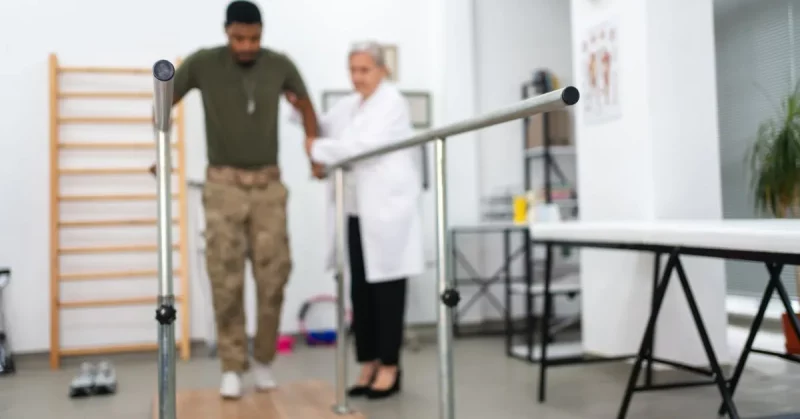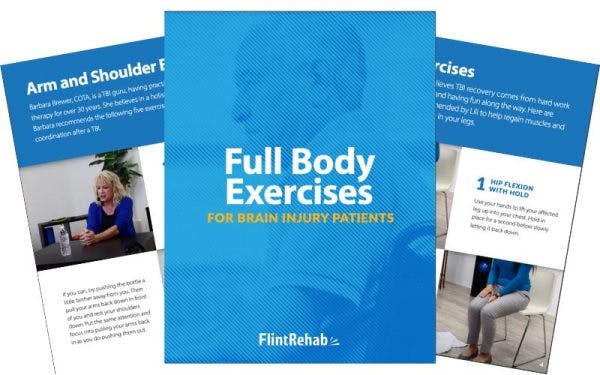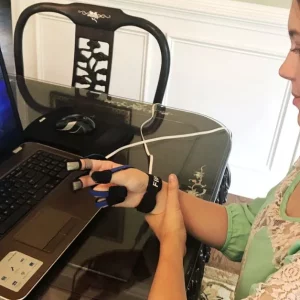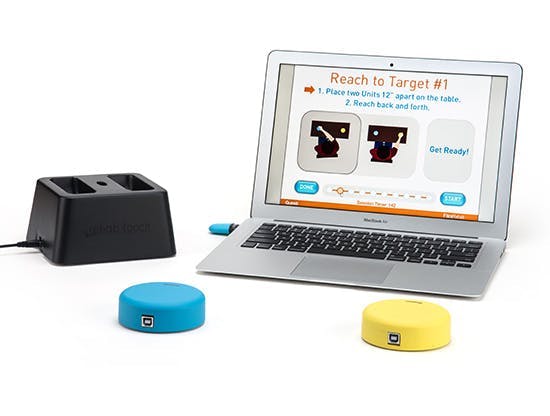Recovery after a traumatic brain injury (TBI) often feels like a winding road. Progress can be fast, slow, or unpredictable. One of the most frustrating parts of this journey is hitting a recovery plateau after TBI. These plateaus can feel like a dead end, even when you’ve been doing everything “right” throughout recovery!
But a plateau doesn’t mean your progress has stopped for good. And in this article, we’ll explore what causes TBI recovery plateaus, why they’re common, and how to push past them with practical strategies and renewed focus.
What Is a TBI Recovery Plateau?
A recovery plateau happens when a person stops seeing noticeable improvements after a period of progress during their recovery after brain injury. For example, someone who was steadily regaining mobility, speech, or cognitive function may suddenly stop improving, even with consistent therapy.
These plateaus can happen at any stage of recovery, from the early weeks to years after the injury. While they’re frustrating, they’re also a normal part of the healing process. Understanding why they occur can help you or your loved one stay motivated and adapt your approach.
Why Do Recovery Plateaus Happen?
There’s no single cause for a plateau after TBI. Instead, several factors can influence progress and lead to temporary slowdowns during recovery.
Here are a few of the more common reasons why recovery plateaus happen after TBI.
1. Natural Healing Slows Down
The brain heals rapidly in the first few months after an injury. During this time, many people notice quick gains. As that initial period passes, progress often slows. This doesn’t mean healing is over, but it may be less noticeable.
2. The Brain Adapts Differently Over Time
Neuroplasticity, the brain’s ability to form new connections, plays a big role in recovery. Early on, your brain may quickly reroute functions to undamaged areas. Over time, it may take more targeted and repetitive effort to build these new pathways.
3. Repeating the Same Exercises
Doing the same therapy routines for too long can lead to diminishing returns. When exercises no longer challenge the brain or body, progress can stall. The nervous system thrives on novelty and variety, especially during rehabilitation.
4. Mental Fatigue and Burnout
TBI recovery is hard work. It often requires physical, emotional, and cognitive effort every day. Over time, fatigue, frustration, or even depression can creep in, leading to lower motivation or engagement with therapy.
5. Lack of Tailored Interventions
As recovery continues, therapy should evolve. If the rehabilitation plan isn’t updated regularly or doesn’t match the person’s current needs, progress may stall. A plateau might be a sign that it’s time to re-evaluate and adjust the approach.
6. Other Medical or Emotional Factors
Chronic pain, medication side effects, sleep issues, and mental health conditions like anxiety or PTSD can all interfere with recovery. These factors can reduce the brain’s ability to focus and adapt, contributing to plateaus.
How Long Do TBI Recovery Plateaus Last?
There’s no set timeline for how long a plateau may last. For some, it might be a few weeks. For others, it could last several months. The key is to remember that plateaus are often temporary.
Recovery doesn’t stop just because progress becomes harder to see. Even during a plateau, the brain is still working in the background, consolidating skills, building endurance, or simply needing time to rest.
Strategies to Break Through a TBI Recovery Plateau
While plateaus are common, they don’t have to become permanent. Here are practical ways to push past them and reignite your recovery journey.
1. Reassess Goals and Progress
Start by meeting with your rehab team to review your current goals. Are they still relevant? Too ambitious? Too simple? Adjusting short-term goals can restore motivation and help you track even small wins.
Ask your therapists or physicians to perform updated assessments. These evaluations can uncover areas where progress is still happening, even if it’s not immediately obvious.
2. Change Up Your Routine
Doing the same exercises for months can create a comfort zone that no longer stimulates the brain. Try incorporating new types of therapy, such as:
- Aquatic therapy for low-impact movement
- Music therapy to engage different parts of the brain
- Virtual reality-based exercises
- Adaptive sports or recreational therapy
Even small changes, like switching the order of exercises or practicing skills in new environments, can boost engagement and outcomes.
3. Increase Repetition and Intensity
The brain changes through repetition. If progress has stalled, it may be time to increase how often or how intensely you practice.
For example, consider using home therapy tools that allow for high-repetition training. Flint Rehab’s FitMi is one such device designed to encourage hundreds of movements per session, helping reactivate stalled progress.
Talk with your therapist before increasing intensity to ensure it’s safe and appropriate for your condition.
4. Incorporate Dual-Task Training
Dual-task training challenges the brain to handle more than one task at a time, which may help reignite neuroplasticity. For instance, you could:
- Practice balance exercises while solving word puzzles
- Walk while counting backward from 100
- Perform memory games while doing arm exercises
This approach improves cognitive flexibility and may lead to gains that traditional single-task training doesn’t.
5. Focus on What’s Still Improving
During a plateau, it’s easy to focus on what’s not changing. But chances are, something still is.
Keep a daily log of what you do in therapy and how it feels. Look for subtle improvements. Are you more coordinated? Do you tire less easily? Can you remember more details from the day?
Recognizing these small shifts can improve motivation and reduce frustration.
6. Address Emotional and Mental Health
Mental health plays a big role in physical recovery. Depression, anxiety, and emotional fatigue can all lead to or result from a plateau.
Working with a neuropsychologist, counselor, or support group can help address these challenges. Sometimes, just talking through frustrations or fears can provide enough clarity to spark progress.
Don’t overlook the value of community either. Joining a TBI support group, whether in person or online, can connect you with others who understand the ups and downs of recovery.
7. Try a New Type of Therapy
If traditional therapy isn’t helping you move forward, it might be time to explore other options. Depending on your condition, this might include:
- Occupational therapy with a cognitive focus
- Vision therapy
- Craniosacral therapy
- Acupuncture
- Hyperbaric oxygen therapy (HBOT)
While not all alternative therapies have strong scientific backing, some individuals find them helpful, especially when used alongside conventional care.
Always consult your medical team before starting something new.
8. Reframe the Plateau as Rest
Sometimes the best way forward is to pause. Recovery takes energy, and the brain needs rest to consolidate new skills. Taking a short break from intense therapy doesn’t mean giving up. It may allow you to return stronger and more motivated.
Use this time to focus on rest, social connection, or other meaningful activities. It can also be helpful to use this time to examine your lifestyle choices and make changes as needed, such as consuming a diet that promotes brain health and participating in regular physical activity as appropriate. Then, you can return to therapy with fresh energy and focus.
Is It Possible to Make Progress Years After a TBI?
Yes. Many people continue to make progress long after the initial injury, even years later. The key is staying engaged, open to change, and consistent with rehabilitation.
Neuroplasticity doesn’t have an expiration date. It can happen throughout life, as long as you give the brain the right stimulation and support.
Even if you’ve been told “this is as far as you’ll get,” don’t assume that’s the end. Plenty of survivors have made new gains well beyond what doctors initially predicted.
The Role of Technology in Breaking Through Plateaus
Innovative rehab tools can help make therapy more engaging, effective, and measurable. If you’re feeling stuck, using tools that track progress or increase repetition could make a difference.
Some examples that we recommend include:
- FitMi by Flint Rehab: Helps improve motor function with interactive, high-repetition training that adapts to your level
- MusicGlove: Uses music and rhythm to make hand therapy more enjoyable and motivating
- Constant Therapy app: Provides cognitive therapy exercises that adjust to your progress over time
Tools like these can bring variety and structure to your routine, especially at home between clinic visits.
Support Matters: Don’t Face Plateaus Alone
One of the most important parts of breaking through a plateau is having support. Whether it’s a therapist, family member, peer mentor, or online group, being surrounded by encouragement can make the process more manageable.
Support helps you stay accountable, reflect on your progress, and celebrate small wins along the way.
If you’re not already part of a TBI support group, consider joining one. In fact, Flint Rehab has an online TBI support group that is open to all TBI survivors and caregivers. It’s a place to find guidance, share strategies, and feel less isolated during tough stretches.
Final Thoughts
Hitting a plateau during TBI recovery is frustrating, but it’s not the end of the road. Healing after brain injury doesn’t follow a straight line, and slowdowns are often part of the process.
With the right mindset, strategies, and support, it’s possible to break through these plateaus and continue moving forward. Stay curious, stay engaged, and remember that even small steps count.
The journey may take time, but progress is always possible.









